January-February 2002
A Land Of Blood And Poison
By Hugh O’Shaughnessy
Since we have Filipino missionaries in Colombia, this should be of interest to the readers. Apart from that, it is interesting that in Colombia the beleaguered peasants have started Peace Zones as we did in the Philippines in the nineties. Colombia is a very large country. There are areas of the land which are mercifully free from the turmoil we describe here. (Ed.)
Scores of Oscar Romeros, martyrs for their faith, for peace and for their fellow men and women, are going to their deaths every year in Colombia. Lay and clerical they die, as people are sucked into a swamp of mud and blood, war, poison and deceit which has no present parallel in the Western Hemisphere and few, if any, parallels in any other parts of the world. The killing has been going on for half a century, well before Colombia was a source of drugs. In the decade after the killing of Jorge Eliécer Gaitán, a popular Liberal leader, in 1948, more Colombians died in battles between Liberals and Conservatives than Britain lost in the Second World War. The killing continues.
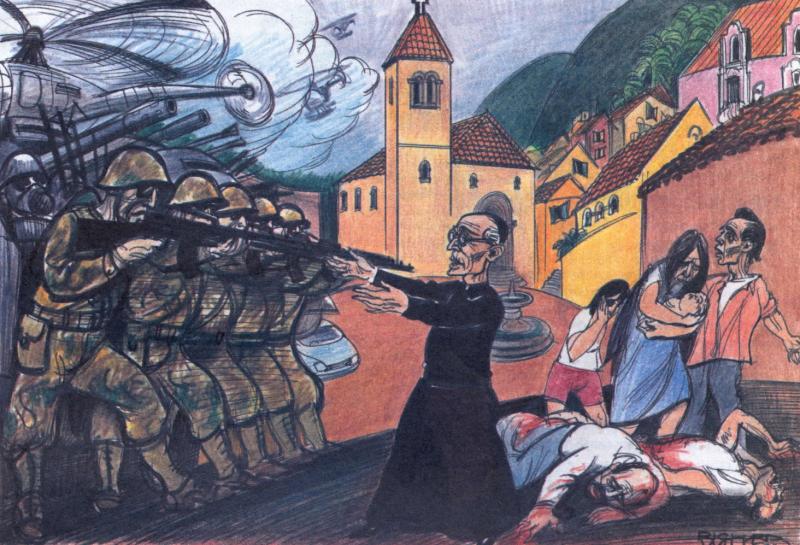
Easy choice: peace
Here are some examples. In 1996 the people of San José de Apartadó in the wooded hills above the plain of Urabá, where mile after mile of banana plants grow and which had become the most violent country, decided they wanted to opt for peace. The village itself had been founded a few decades previously by a group of displaced people, but now the villagers wanted to opt out of the violence which had pitted the army and its allies in the paramilitary death squads against the supposedly left-wing guerrillas; and the plantation bosses against the workers who were bold enough to join a trade union.
What it takes to put down arms
San José therefore proclaimed itself a “peace community”, the villagers pledging themselves not to bear arms and asking what are commonly known in Colombia as “armed actors” not to bring arms into the village. Their action attracted the support of many inside and outside Colombia. A wall in the little square in the village bears the message of support from Jeremy Thorp, the British ambassador, and a plaque commemorates a gift from the Dutch government. For several years at least two members of the Peace Brigades International (PBI) have been constantly in the village. The PBI are made up of foreign, mostly young, volunteers who live in areas of conflict and by their very presence seek to deter the sort of bloodletting which might be carried out by those who were sure their actions would never be observed and reported on outside the country. Infuriated and undeterred, the soldiers, paramilitaries and guerrillas have killed about 80 of the 1,000 villagers since the community was established. Under the protection of the army, the death squads routinely rob the villagers of the money from the sales of their cocoa and bananas as it is sent down the track to the bank in the nearest town. The last incursion was in March when a group of masked men, including at least one soldier from t he Colombian XVII Brigade, burst into San José after dark, burning and looting and warning the inhabitants to get out forthwith.
The survivors remain nevertheless, despairing, but for the moment determined that their idea shall not die. They tend the little memorial to their dead at the foot of the wall bearing Mr. Thorp’s words.
Padre Eusebio
At the other end of the country, on the River Putumayo, a priest whom I shall call Padre Eusebio goes about his business in the recently established Diocese of Sibundoy-Mocoa. Though he has happily stood in at the local army base when its regular chaplain has been absent, he is known to be opposed to the situation where the army and their death squad allies, armed by the United States and trained by US troops and mercenaries paid by the authorities in Washington, terrorize the neighborhood.
Mass over piled guns
A few months ago Eusebio, this known critic of the situation of conflict, found a whole new congregation at a Sunday Mass in one of the parishes he serves. The regulars had been displaced in the church by a battalion of troops in uniform who were all carrying their arms. The challenge and the threat to what the Colombian army and its US allies looked on as a turbulent priest could not have been plainer. So Eusebio addressed his newly assembled congregation and told them that Mass would not proceed unless the forest of guns were first piled up outside. Officers were seen to be talking urgently on their radios, presumably with their superiors at the base. In five minutes the weapons were stacked outside and the Eucharist went ahead.
Eusebio won his point that Sunday, though the army and its foreign backers made it clear that they would have happily done to him what the late Colonel Roberto d’ Aubuisson and the same foreign backers had done to Archbishop Romero as he said Mass that day in March 1980 at the hospital chapel in San Salvador.
Plan Colombia
The Plan Colombia continues, with aerial fumigation bringing severe skin rashes and respiratory and digestive illnesses to children and adults, who are pelted with the toxins which also destroy food crops and poison the land and water on the slopes of the Amazonian basin. In an ugly resonance from the past, some of the fumigation aircraft are operated by a US company which was contracted to deliver narcotics for the Contra terrorists in Central America during the Reagan onslaught against the government of Nicaragua. Despite the Plan, the coca bushes still flourish.
The death squads have taken over the town of Barrancabermeja, Colombia’s oil capital, this year. “We’ve lost count of the number of murders,” says one human rights worker. “We just fish the corpses out of the river.”
Displaced souls
In the capital Bogotá itself, human rights workers go in fear of their lives. An aid agency with counts the rise in displacement and exilings has prudently donated doors of bulletproof glass to the group which charts the fate of Colombian displaced people. Those in authority do not like to be reminded that 2.1 million people are displaced in their own country and perhaps 4 million have sought refuge abroad. Romeros and potential Romeros are to be found in many trades and professions, notably the law, the media, the trade unions and politics.
It is extremely difficult to give a concise overview of the tragedy of Colombia in 2001. The most illustrative facts are to do with violence. The government says there were 25,600 murders in 2000, an average of 70.1 every day, while kidnappings last year were a veraging 8.3 a day.
Concealed atrociti
The outside world’s view of the horror of life in Colombia has been colored by myth-making by all sides while powerful forces at every point on the political spectrum are at work using every art of lie, euphemism and obfuscation to hide the raw truth.
Drug Peddlers
The particular concerns of recent US governments – that narcotics be destroyed abroad and anti-drug action within the US itself be limited to the imprisonment of minor drug peddlers, often from the racial minorities, while the major drug distributors work on in undisturbed – have perverse results. Non-Colombians are often under the delusion that narcotics are the principal problem in Colombia and that the guerrillas – christened “narco-guerrilas” by one US ambassador – are the source of the country’s woes. The fact that earlier this year the representative in Bogota of the UN Drug Control Programme declared that the paramilitary death squads, allies of the armed forces, were closer to drug trafficking than the guerrillas has not been widely registered. Nor is it well known that Colonel Hyett, a US military attaché in Bogotá, and his wife were themselves found guilty of narcotics offences.
Deaths of journalists
The veil of ignorance is thickly woven. Twelve Colombian journalists have so far been killed this year and authors are routinely murdered or forced into exile. Foreign journalists, though less at risk of their lives than the locals, have much to battle against. Colombian politics, apparently split neatly between a Conservative and a Liberal Party, are in reality very complicated and vary wildly from one part of the country to another. Voter abstention at election time has reached very high levels.
Endless war
Things will surely get worse before they get better. New weapons are beginning to pour into the country under Plan Colombia, raising even higher the level of violence. The death squads are organizing themselves with increased political sophistication and claiming seats at any negotiating table where government and guerrilla forces gather. The Pastrana government, which promised peace, has been blown onto a war course by the Plan Colombia.
As the murder continues there are few enough bases for hope. Paradoxically perhaps, the only substantial one is the doubt surrounding Plan Colombia itself. It is looked on as poison by the European Union. It has been criticized lately by Henry Kissinger and the Rand Corporation, a conservative US think tank. Some of the US military are also fearful of it as a recipe for the eventual embroilment of their country in a South American Vietnam, a worry that is behind the decision to try to fight the war in Colombia with US-funded mercenaries rather than with US regular troops.
While Plan Colombia and the further militarization of the country survive, however, war clouds will continue to hang over Colombia.
Salamat sa The Tablet
Amidst Guns, We Light Candles
By Sr. Norma More DC
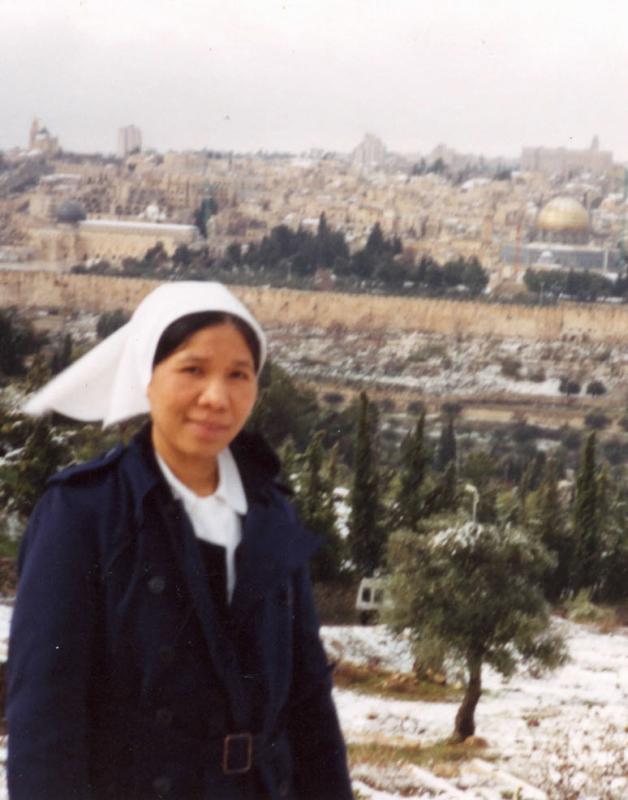
In the strife-torn Holy Land, Filipino missionary Sr. Norma More, dc, together with her companions of different nationalities, strives to look after the handicapped children from each of the three religious communities – Jewish, Muslim, Christian – which make up the population of Palestine. St. Vincent’s Home, amidst present political and racial disharmony, in its own way bears witness to God’s call to peace. Sr. Norma tells us about their trials and joys. (Ed.)
St. Vincent’s Home is one of the places in Israel where one can just be himself irrespective of creed, race, nationality and political ideologies. Yesterday evening was one of the several celebrations that gave concrete evidence to this. One of the employees who has worked here for many years was leaving for good. A thank you party was held in the garden and it was attended by almost all of the personnel including the sisters and some of the children. Everybody danced to the sound of the tamtam, Jews and Arabs alike plus the volunteers from different countries. There was a deep joy radiating from each and everyone present. For me, it wasn’t just an ordinary gathering, it very much resembled that of a “Messianic Banquet”.
How odd because taking place a short distance away were air strikes and bombardments, which normally could keep people out of their homes and mess up celebrations like this.
El Aqsa Intifadeh
Sad to say that the Israeli-Palestinian conflict or what the latter called the El Aqsa Intifadeh which started in September is escalating rather than winding down. The suicide bombing attacks on innocent civilians, air strikes and bombardments are claiming scores of victims on both sides. The economic sufferings in the Palestinian territories due to closures and unemployment is widely felt, not to mention the psychological pains due to insecurities and loss of loved ones. There are very few tourists and pilgrims coming to the Holy Land, hence the hotels in the country and the religious hostels are almost always empty.
Dignity Robbery
Ein Kerem is a quiet place and far from the “danger areas” but we are not spared here at St. Vincent’s. Fewer volunteers are coming to help from abroad. When there is a complete closure of roads our Palestinian employees couldn’t come to work. The quality of the children’s care is affected, and those who stay are overworked. When our volunteers and employees go out for outing by themselves or with the children we always worry for their safety. When there are roadside shootings and kidnappings the parents of the children couldn’t come either to visit them. At the heart of this long conflict is the social injustice and violation of human dignity.
Jesus, nonviolent peacemaker
Many attempts have been made by the political leaders to negotiate peaceful and workable solutions but they always failed. It is clear that military force is not able to stop violence; it only perpetuates it, breeding and nurturing hatred. We will not always know what political strategy is the best. Jesus however is the ultimate example of the nonviolent peacemaker. He never mimics the violence and injustice that he is trying to change.
Our own person, our gift to others
The thank you party we had showed that we still have this ability to celebrate brotherhood even in the midst of conflict. Hopefully those present will share that same spirit of deep joy among their neighbors. In the struggle for justice and peace our true weapons as Christians here in this divided land are not ideology and guns, but lit candles, hope, personal integrity, charity and prayer. We must have a reverent awareness of the needs of our neighbors. We have to find God for them through our loving service, our compassion, and understanding. It is when we live in the presence of this God who is always present in us, that our life will be a gift to God and a gift to others.
Dust Of Life
By Christina Noble
Christina Noble was a street child in the city of Dublin, Ireland. Her father was alcoholic and she suffered unspeakably. But it is one of the mysteries of life that she has risen from the ashes of her childhood and given her life to helping street children in Vietnam. Vietnam, like the Philippines, has thousands of street children and homeless children. The editor of the Korean version of Misyon, Fr Malachy Smyth, a Columban missionary in Korea, has interviewed Christina and has allowed us to share that interview with you our readers of Misyon.
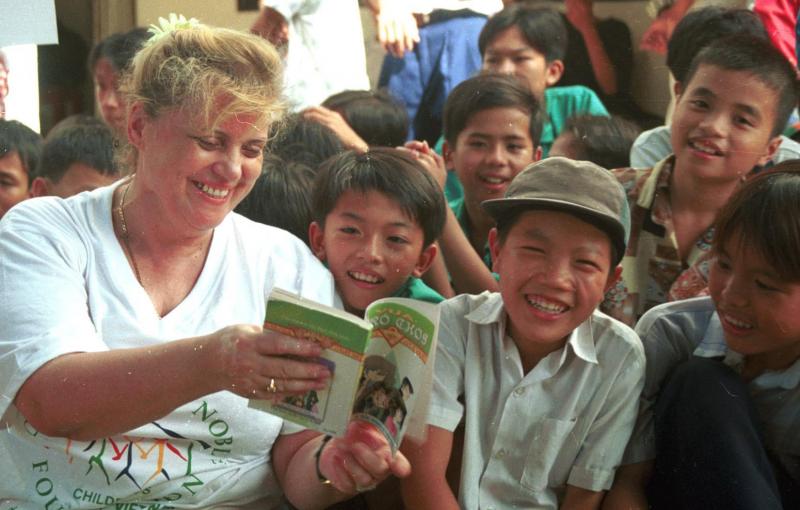
Why do I feel their pain

Here in Vietnam, the street children were once called the Dust of Life. Now it is against the law to refer to them in this way. There is a lot of work being done by the government in the children’s interest, especially the ones living in the streets. A more recent and growing worry is the problem in drug addiction. And it is not just a Vietnam problem; it is a global problem. It is wreaking havoc among the youth of the world.
I have spoken to hundreds of thousands of young people and I know their longings and their pain. I have met them over a broad spectrum of society and they all say the same thing, “We are scared. We are afraid and insecure. We don’t know how we are going to cope with life outside.”
Well, I have an identity with them even though I come from a different culture, different language, different everything. The one thing we have in common is the suffering I experienced in childhood in Ireland: the deprivation, the abuse and neglect, the isolation, rejection and pain. I always say there is no difference in the pain of an Irish child and a Vietnamese child. If you live on the streets and you are homeless and you are deprived of your parents and deprived of the community you live with, have no friends and are isolated, you are then what is called Boi Doi, a street child.
I myself was deprived of these things and I think what I feel for these children is the same pain I felt when I was a child. I can pick up their pain, their sense of inferiority as few others can.
At times they put on a false bravado, with insecurity underneath. But they are still children, that could never be denied. So you have to build up trust with them and that takes time. So it was my own history, my own childhood journey that helped me enter the children’s world.
Way out: Education
I think education is the way out of the black hole. A child needs to learn about his environment, his culture, then about his whole reason for living in this world. To do that he has to learn to read, learn history, learn interaction with others, learn social skills in order to get out of the hole and be productive in society and to be accepted.
We currently have 33 projects up and running here in Vietnam. We are just about to build two more schools now. We are also rebuilding the existing medical facility first opened in 1991. This is being revamped into a high technology center for the children. That means there will be more machinery there to help the children born with defects. It will accommodate 85 children altogether. So there will be hi-tech machines and hi-tech people to administer help to the little ones who are physically handicapped.
What matters most
Well I probably know today more than at any previous time how hard my life has been. I never felt pity for myself. I don’t think I’m the only one. I’m just one of countless of children around the world who suffered in that way. It’s not just the lack of food, it’s not the lack of having a posh big house, and it’s not the lack of having a scooter or a pair of shoes or any of those things. Even though they are important to a child, the most important thing is having a mother to take care of you, a father to say it’s ok, having a pillow to put your head on at night, to feel safe, secure and know there is protection around you.
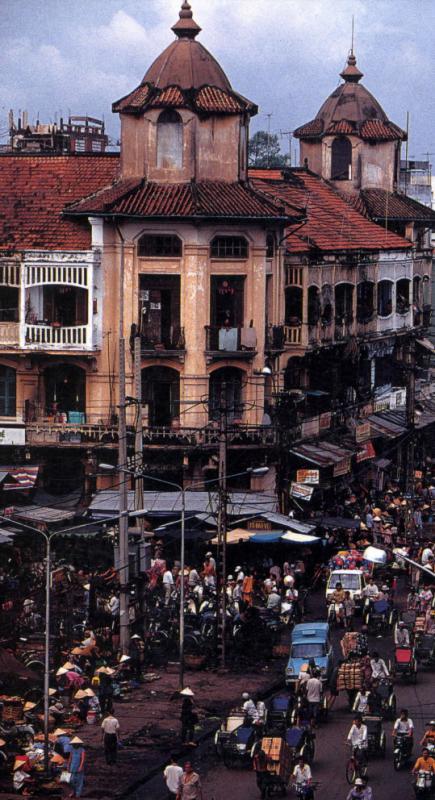 I lived in a hole
I lived in a hole
I was deprived of these. It was like eternal isolation for me, loneliness, the absolute loss of brothers and sisters. I was living like a stray animal in every sense of the word, sort of building my own grave at nighttime, getting myself down and covering myself up somewhere along the street. And then thinking,“Will I get a nightmare tonight? Will it be very scary, will I survive it, and will the ghosts come and get me?” Well nobody knows more about that darkness than I do. I can show you the hole in Phoenix Park – the Rizal park of Dublin – where I used to sleep at night. It’s still there. And each morning I woke up freezing cold. I am suffering now because of the cold injuries to my legs then living in that hole.
When you are a child and lonely it is a different sort of thing than when you are abused and your body and your spirit robbed from you. There are no words for that. So when I am with the children I understand their world and I said whatever it takes to help them I will do. If you make a commitment to these children, if you hold their little hands and make a commitment you are going to have to do it. Otherwise you betray them. To give false hope to a child could be the worst possible thing. My father gave us false hope every day. Saying, “I’m never going to drink again, everything is going to be ok.” Of course it was never like that, he got a few shillings and he was drinking again. So I really understand every step of the way I am taking with these children. I knew it was going to be hard and I didn’t have a clue how I was going to do it. But I decided I was going to wake up every morning and take that day and make something happen. And the following day a bit more, and I will go on and on and on.
Me and my Friend upstairs
I have a great Friend upstairs. The relationship I have with Him is very special. He knows me. I am sure He gets very upset with me at times because I swear a lot. But that’s the way I am. I love our Lord deeply and my faith is very deep inside me. There is no doubt my faith helped me on my journey. But I won’t impose my faith on other people. I never impose my religion on anyone else but I never deny my God to anyone either. I never will. He has carried me such a long way, you will never know. I have been in darkness and I have crawled out when I could hardly take a step to walk. He is there all the time with me. I sincerely believe if it wasn’t for my Father in heaven, my Lord, I wouldn’t be alive today. Well, He has to keep me alive. I got these children to live for.
I Searched For You
By Aissa P. Bautista
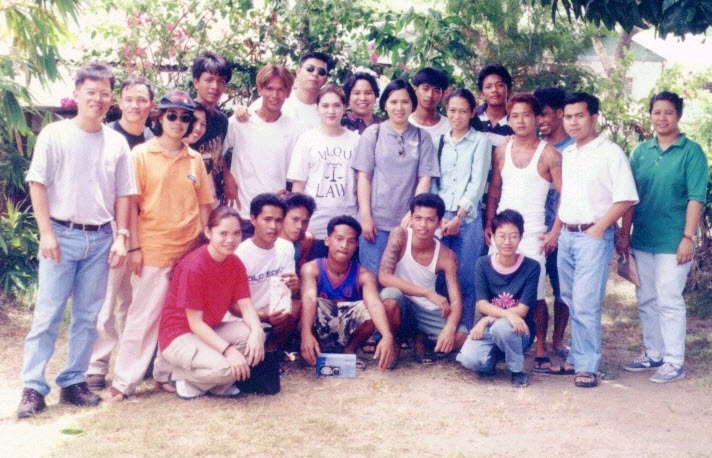
It was year 1995, the 10th World Youth Day in Manila – an event which changed the course of my life. It was the call of the Holy Father to the Filipino youth: “Commit yourselves fully in following the saving mission of Christ. In your own world first: in your families, communities and in the nation to which you belong and which you love, and in the wider world of Asia.” That prompted me to leave my job in favor of mission work.
I was given the task of creating a mission-oriented youth group which will support us in promoting missionary awareness in the Philippines. Thus, the birth of Filipino Youth with a Mission (FYM). On the other hand, while our team leader’s goal was limited only to soliciting support, I had a deeper goal. My goal was that by the Year 2000 and beyond, there would be a group of evangelized youth ready to be sent to mission countries in Asia to join the group of priests, nuns and lay missionaries. That the highlight of our Jubilee celebration would be the sending-off ceremony of our missionaries.
A True-Blue Youth Pilgrim
Little did I know that I would become a true-blue youth pilgrim, that means literally going from one place to another to reiterate the message of the Holy Father and encourage the youth to respond to the missionary challenge. Suddenly, my life was not anymore confined in my own parish as we were able to visit many parishes in the South, especially in Cebu, Cagayan de Oro and Davao, where I begun to appreciate other cultures and traditions apart from my own. I lived with other families and even in short period of time became part of their lives. And like all other foreign missionaries, I knew that God is already there even before I came.
St. Therese of Lisieux in my Life
As I journey through missionary life, I become aware of the intercession of many saints in my life, most especially St. Therese of the Child Jesus – the patroness of the missions. The everyday challenges in my life are made easier to face because I feel her presence and guidance. There was even a time when I really felt my heart would burst because it overflows with love, and I can’t contain it so I must share. And in my great love for the Lord, I prayed this prayer of St. Therese: “Make me an instrument of your love. Let me do the things you wanted to do during your lifetime, your unaccomplished mission.” It was a simple prayer yet I never realized it would trigger more implications in my life. It’s like asking God for a heavier cross.
A crisis of faith
Just when I was ready to go to foreign mission I realized that the road leading to Christ was getting narrower. It was at this stage where I have been looking for Jesus but I couldn’t find Him. Not even in the faces of people who I thought were much closer to Him, people who should be and were expected to be a reflection of Him. And I came to a point where there were a lot of intersections and I didn’t know which way to go. I soon realized that the foundation of my faith was weak.
I was almost tempted to despair, still I called on Him. And in these words of St. Augustine I found the answer: “You were within me…and I was in the world outside myself. I searched for you. You were within me. But I was not with you.” I knew then that all these were just preliminary to all the bigger trials that would come along my way. Indeed in fire, gold is tested.
Lost Sheep
One problem came after another and I was almost at the verge of collapse. So I decided to spend a few days alone, but with the guidance of the Contemplative Sisters of the Good Shepherd. I always seek their refuge whenever I feel like a lost sheep, a short-sighted sheep who cannot walk by faith. This moment allowed me to weigh things and gather the missing pieces of my life. Though I cannot fully understand why God allows things to happen, I knew someday I will find the answer, in His own time.
Faith in action is Love, Love in action is Service
Despite all the problems I encountered, my longing to serve God did not cease. Finally, after years of promoting missionary awareness, a Columban priest whom I have known for quite some time, Fr. Donal O’Hanlon, paved the way in my joining the Columban Companions in Mission (CCIM). The CCIM is a group of committed laypersons who share their love, resources and services to the marginalized, with the guidance of Fr Donal O’Hanlon and Sr. Pat Daomilas, a Columban sister, and with the spirituality of St. Columban. Like him, our motto is “We belong to Christ, not to ourselves.”
The CCIM has four sub-groups and one of these is our St. Therese group which gives moral and material support to some selected juveniles (youth offenders aged 14-19) of the Medium Security Compound of the New Bilibid Prison. In the eyes of the young people, I see the face of Jesus. In their smiles, I learn to appreciate more fully the gifts God has given me. And every encounter with them is a manifestation of the presence of St. Therese in our midst.
Throughout my journey, I found my life to be in constant struggle between good and evil, love and hate, hope and despair. And amidst all the disappointments, failures and trials, I am convinced that like anyone else I am called to love others, regardless of what I profit from loving them. For I truly believe that the gift I freely receive should be joyfully shared with others.
In Peru, Things Are Moving
The Church in Peru becomes more missionary
By Fr John O’Connell MSSC
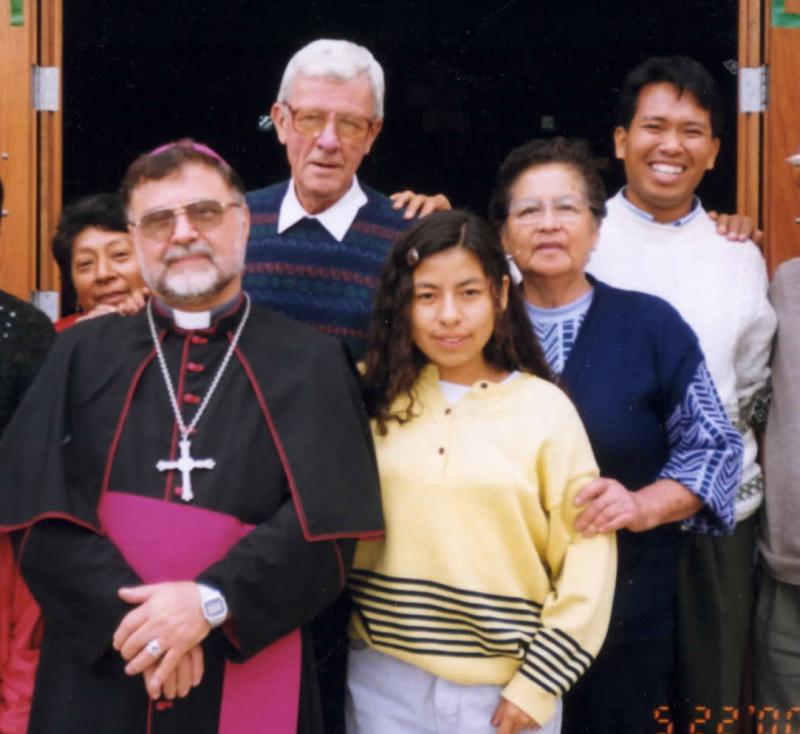
When I first came here some forty years ago and worked in the parish of Saint Martin de Porres we had an average of five pastoral meetings per week. We had one central church where we celebrated seven Masses on Sunday with two morning masses on weekdays.
Now as I work in the parish of St. Peter and St. Paul, with much the same number of Catholics (40,000) we have chapels for each five communities, each with its own pastoral council and activities. There is an ever increasing need to decentralize and to have lots of meeting rooms.
Necessity is the mother of invention
During the late 80s to early 90s, there was a newly built-up urban area adjacent to a number of Columban parishes with little or no presence of Church. The Columbans were already overstretched and “cut-backs” were being insisted on from the hilltops. The Columbans made several approaches to the Archdiocese to move on the matter. Promises were made but no action.
So it was in 1994 that the Columban group decided to muster and prepare teams of five or six laity from each of the eight neighboring Columban parishes to go and evangelize a section in each of the area.
Mobilizing the Laity
At first the task was not easy because of the dusty streets, not knowing the area or the people. It meant knocking on doors and explaining that they were Catholic missionaries and not of other denominations. The response was positive and in a short time Bible study and prayer groups began. There were programs to take care of the sick and the elderly. The people began to assemble for Sunday Liturgy and to look for building sites for chapels and meeting rooms. Baptisms, First Communions and weddings were conducted and some were also prepared to work as lay leaders.
Despite shortcomings the whole effort was definitely considered to be successful. The upshoot was that the people needed and requested the permanent presence of a pastor so the Columbans decided to take responsibility and the parish of Our Lady of the Missions is now a thriving parish.
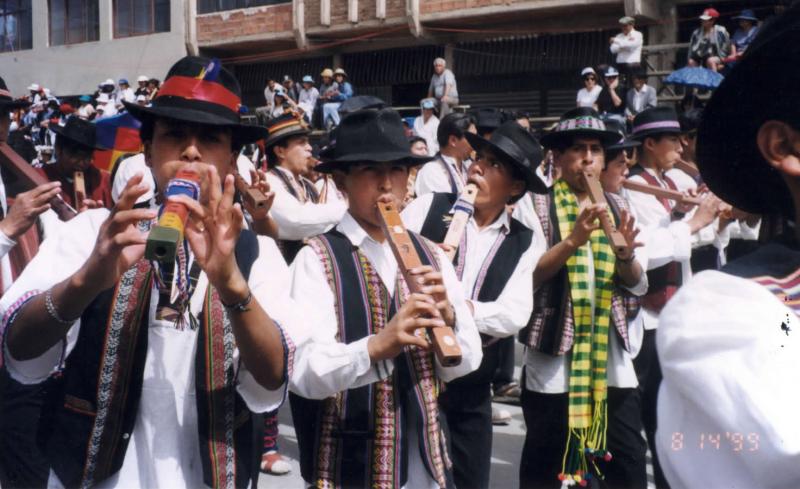
Widening the Horizon
In early 1998 the Columban group in Peru had what should be termed “watershed-assembly”. We decided on an integral vision statement and plan of action for 1998-2005. It certainly has given focus and energy to the group; it was the work of all in the region and has everybody’s support. One of the main thrusts of the program was to help the Peruvian Church become more missionary.
We began to have monthly meetings of some 120 people at our center house where themes related to mission, the Church and the Columban charism were treated. There was plenty of joy and enthusiasm.
Mission to the Interior
By January-February 1999 we were able to send four teams of five missionaries to some villages in the Andes. Seventy percent of our missionaries were female and this in itself had a tremendous impact in the Andean villages where, traditionally catechists were male. They received a very warm welcome, did good work and often the local communities wanted them to stay on, pleaded with them to come back. The catechists testified all of this to their local parishes here in Lima on their return. That same year we had 80 people signed up to go on mission to the ‘interior’.
Missionaries in abundance
I figure that the happiest and greatest day of my life here in Peru was when the group of missionaries had come back from their various assignments and gave testimonies to the “joys and hope, sadness and distress” of their experience. Indeed, the composition of Columban group here in Peru has made a lot of difference in the lives of the people here. Every year, more and more missionaries are signing up their ‘yes’. And now, more and more missionaries from abroad are also joining us here. We now have the newly ordained priest with us from the Philippines, Fr. Rolly Aniscal. He is of pleasant disposition, gets on well with the youth, loves to sing and plays the flute, so we should get along all right. As I write this I can hear him sing at the top of his voice. He figures he is John McCommack. I guess, after all those more than forty years of spending my energy on mission organizing here inPeru, I still would have to learn to cope with youthful exuberance.
Kalahari Desert Becomes A Nation
By Sr Remedios delos Reyes OSB
 About a decade ago, the order of Mary of Immaculate came to Windhoek to start the first mission here in Namibia, Southern Africa. In 1923 my own congregation, the Missionary Benedictine Sisters of Tutzing also went to Namibia to do their apostolates – health and education programs. It’s easy to feel at home here in Namibia. Namibians are very much like us Filipinos. They give importance to family life, education and of course they also love eating and having fun.
About a decade ago, the order of Mary of Immaculate came to Windhoek to start the first mission here in Namibia, Southern Africa. In 1923 my own congregation, the Missionary Benedictine Sisters of Tutzing also went to Namibia to do their apostolates – health and education programs. It’s easy to feel at home here in Namibia. Namibians are very much like us Filipinos. They give importance to family life, education and of course they also love eating and having fun.
Small Population
Namibia is one of the least densely populated countries in the world with an average of 1.3 persons per kilometer. Eleven languages weave a rich cultural tapestry. However, English is the official language since 1990 (Independence Year); Afrikaans and German are also widely used here. There are also eleven ethnic groups in Namibia and the Ovambos are the largest group.
History and Economy
The interesting and culturally diversified history of Namibia is a reflection of the many countries which, at one stage or another, exerted influence over Namibia. Namibia, known as South West Africa, was declared a German country in 1884. This German influence is prevalent in Namibia even today as seen in the old-world architecture of its many towns and cities, the cuisine, customs and traditions.Namibia only gained its independence from South Africa in March 21, 1990. Namibia is considered advanced in technology by the standards of South Africa. Namibians enjoy a higher per capita income than any country in the region with the exception of South Africa. The country also has a high literacy rate. Mining, agriculture and fishing are the three main industries responsible for the high economic growth of the country.
My apostolate – Woman Chaplain
My apostolate involves teaching children of diplomats and affluent families of Windhoek and nearby places. I teach Religious Education to thirteen students and Music to eight students in Grade 5. St. Paul’s College in Klein-Windhoek caters to different groups – Christian and non-Christians, young and old students. I am also the college chaplain of St. Paul’s. I invite ministries from different groups, priests and sisters in the archdiocese to speak to our students about vocations and missions.

Support Group
An essential part of the missionary life is having a loving community. Our Sisters in Windhoek Priory give me their support, love, trust and prayer. These things see me through my daily activities especially in my teaching. My own family back in Bago, Negros Occidental – that is my relatives and friends – keep me well here in Namibia with their prayers.
Letter To Loretta

By the late Fr Aedan McGrath MSSC
Fr Aedan McGrath died suddenly two years ago on Christmas day. He was a veteran missionary from China as our story will show but he also spent many long years here in the Philippines promoting the Legion of Mary and a movement called INCOLAE, which sent lay missionaries from the Philippines to Oceania. While in China his passing friendship with the famous film star, Loretta Young, turned out to be a blessing which would help to save many lives. Read the letter which sixty years later or more he sent to Loretta. It will explain everything.
Dear Loretta,
You have no reason to remember me, but I have many reasons to remember you and your name, because your name as a famous film actress, and as one working for the Church (especially with Father Peyton), helped to solve one impossible problem I had in my parish in China about 1939.
I was then about 30 and I am now 94! But I did have the good fortune to meet you in Hollywood when visiting there. I even knelt beside you in the chapel during Benediction, and we did have a little chat.
I am a Columban Father (and you may have met some of them in Los Angeles). I have spent most of my life in China. (My heart is still there.) About 1939 the Japanese forces which came through Nanking – and behaved badly there – then proceeded to my area, and all young women had reason to be frightened.
My bishop was poor and I never had a church or a house, but I lived where I could here and there. On the approach of the Japanese, the women in the town were terrified and appealed to me to protect them – the only foreigner in the town. I told them I had no house and no money. They replied, “We don’t need your money and we will find you a house” – which they did with a wall around it. But I was at a loss what to do and could only beg the thousand or so women who fled to the house to beg God to do something.
On the morning after the entrance of the Japanese I went down to the General to beg protection. He refused to see me and the interpreter only laughed at me. I felt all was lost and I returned to the house with the bad news. On the way (God’s ways are strange), an ordinary soldier called me to have a chat. (He wanted to practice his poor English.) I grasped at this straw. I told him I was a priest with refugees – women. The nearby soldiers became very excited as they could not find the women anywhere. When this man heard my story he left me and I would say that he returned to the General to say that there was an Irish priest in the town and was warned by him to be careful after their bad name in Nanking.
He returned and asked me to bring him to the church premises. At first sight he saw hundreds of women and was amazed. (I still had not an idea what to do.) I brought him to my little room where there was an old broken gramophone. He remarked, “You like music.” The he asked, “You like movies?” I replied that I did. His third question was vital, “You like Loretta Young?” I replied that I did like Loretta, and that she was in fact a personal friend of mine.
That was that. He got so excited and laughed hysterically and kept repeating, “You know my Loretta Young, a friend of yours!” He really lost control of himself. It was evident that he admired your movies and you particularly, and it took some minutes for him to become calm again.
He asked me for a big sheet of paper and Chinese ink and brush. He wrote two or three large characters and then from his back pocket took a Red-Seal and stamped the paper and said, “Put that on the gate, and if you ever get anymore trouble send up the boy to bring me down.” Several times he came and solved my problems.
He was the one Japanese officer who could have done that for me. I have always considered it a miracle.
Dear Loretta, that was the end of my trouble. Those women could not leave that house for six months, and yet no soldier dared to climb the wall or enter the compound. The gratitude of those women can only be imagined.
There were only a few Catholics amongst them but many Protestants. During that six months my five groups of the Legion of Mary were busy instructing that whole house full of women, and before they left most of them were baptized Catholics with the menfolk and families. That was a true story in every detail.

China was full of problems, and so I did not return home to Ireland for 16 years. Of course, when people asked me about China the highlight was the story of Loretta Young. How often did people ask me, “Have you written to Loretta yet?” As you can see I never got around to it. I am now 94 and still busy with the Legion of Mary all over the Philippines and Asia. Only last week an American Sister phoned me to ask if I had ever written Loretta Young. And I had to say, “I am afraid that I have neglected that duty.” “Well,” she said, “do it before it is too late for you.”
So at last I have got down to doing something about it. My most sincere apologies for not having let you know about it, but the Lord will not forget it.
At 94 I am still healthy and able to move about the Asian countries on my work. People ask me why have I not written a book and my same reply is that I have been too busy on my job to take the precious time for it.
I hope to enclose with this letter a cassette tape which was made in Dublin last year. It repeats what I have written and might amuse you.
May God and Mary keep you in good health and reward you here and hereafter for the miracle which your good name worked in an impossible situation.
Father W. Aedan SSC
Slow Learner
By Fr Neil Collins MSSC
“Young people today find it very difficult to make a permanent commitment.” I’ve heard this many times in recent years, and to some extent I can understand what they mean, because of my own mixed-up history. Many years ago I became a priest, then left the priesthood, and heard God’s call again.
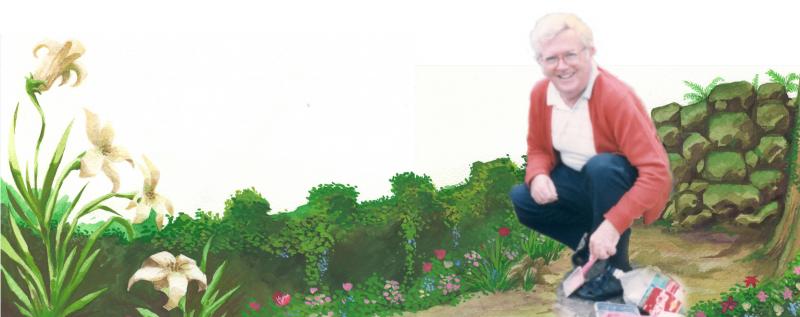
One of the big influences in my vocation was my Uncle James. He was a Columban missionary in China while I was growing up in Ireland. Travel was impossible during the Japanese War so he couldn’t come home. I think we had only one or two letters in all those years. But we read aboutChina in the Columban’s “Far East” magazine, and we prayed for him every night. My imagination did the rest. For some reason I always imagined him, a heroic figure, walking along a narrow path through the rice fields. Then in 1948 he came home, and he was as wonderful as I’d imagined, full of laughter and doing unexpected things like getting us out of school to climb the local mountain with him.
Not for contemplatives
So the idea of becoming a missionary was already in my mind when I went to high school. There I read books like the life of Fr Damien the Leper and during our annual retreats I heard about other possibilities. I remember going to one retreat master, in some confusion, wondering if I should join a contemplative order. He wisely told me, “You’d explode in a very short time.” Anyway, I joined the Columbans.
Teaching in the Philippines
After ordination some of us were sent to a university in England, and as a result I was assigned to the Philippines to teach in a minor seminary. I found out that I loved teaching and for a couple of very happy years things went well. Sad to relate problems arose, conflicts and doubts and great darkness, some of them my own fault. After a long struggle, of more than two years, I came to believe that I should never have become a priest. I went home to Ireland and asked permission to resign.
Left priesthood
Immediately I had to look for a job and since I’d enjoyed teaching I applied for the few positions that were being advertised just then. One of them replied and the following September I found myself teaching six different subjects to a group of third year high school students. Most of them hated school and they taught me to teach. Unknown to me the school manager, a priest, and the vice-principal were watching me and after my first year in the school they invited me to teach religious education full time. It was one of the steps in the Lord’s plan to bring me back to the priesthood.
Faith and doubts of the young
Two characteristics of the young people I taught impressed me: their faith and their doubts. Thanks to their parents they were convinced Catholics, yet they found Mass boring and had many questions about our religion. Two priests used to visit the school. Neither was a very good teacher, but the students were impressed by their way of life. As Pope John Paul II says, “People today put more trust in witnesses than teachers.” My students longed for such witness, for people whose lives showed that what we believed was really true. They seemed to think that I taught religion because I was paid to do so, but that the two priests gave their whole lives to God.
Practical charity
Some of them went with me to a hospital for the mentally handicapped. It was remarkable that boys who were troublemakers in school were totally responsible when put in-charge of a handicapped person. We ran handicraft classes, held a disco for seventy adults every Tuesday night, and even produced programs. When Laurel and Hardy met Dracula and Frankenstein six of the audience were so afraid that the nurses had to take them out, but we were asked to repeat the show since it had brought so many to life. In all this I saw the practical charity of our young people.
Slowing down in the garden
When I went home first I stayed with two of my sisters in Belfast. It was a time of great strife. Frequently on my way to school I had to pass a building that had been bombed the night before. On a couple of occasions I risked having my car burned.
Always there was tension. Then I managed to buy an old house out in the country near the school, and there I learned to garden. The previous owners had no interest in flowers or vegetables so I found a small jungle. Every evening after school I’d go home and begin digging, rooting out huge weeds, old wheels, children’s toys and broken glass. Slowly the garden took shape and slowly my mind slowed down. Eventually I began to hear what was going on in my heart, to discover what I really wanted. I prayed more, and listened to the Lord more. My students’ needs and questions found echoes in my conscience. Then one day, at a party, I heard a man say that the Pope had invited former priests to return to their ministry.
Lost and Found
In the weeks that followed I tried to find out if the Pope had really said that, and I prayed. One night I was so filled up that I took the phone and called the Columban superior in Ireland. “Was it true?” He responded very calmly, although he told me later that he was full of joy. And so began the process of returning to the priesthood. I forget some of the details now, but I remember a long interview with the superior. Why had I left? What was different now? Then one day he called me. I had permission, from the Vatican, to try to return to active priesthood. I went home to tell my family, and bought a bottle of Champagne on the way – the only time I’ve ever tasted it.
Rome asked me to go to a religious house, to deepen my motives and to get suitable updating. There was a three-month course in the Columban seminary which fitted that description, and after that I had some guided study, until just before Easter 1982, a letter came from the Vatican permitting me to rejoin the Columbans, and to work again as a priest. My family and many Columban friends were present at the Mass when I took the oath of membership. But later that week I had an even more overpowering experience when I joined our parish priest, and walked out onto the altar of our parish church on Holy Thursday, to celebrate with all my friends and neighbors.
I’m a slow learner
On my return to the Philippines I was assigned to several parishes in Zamboanga del Sur where the leaders of the Basic Ecclesial Communities carried on the good work begun by my students, teaching me more about being a missionary and a priest. I must be a slow learner, because the process continues even today. Maybe one day I’ll know.
The Act Of Giving
By Bo Sanchez
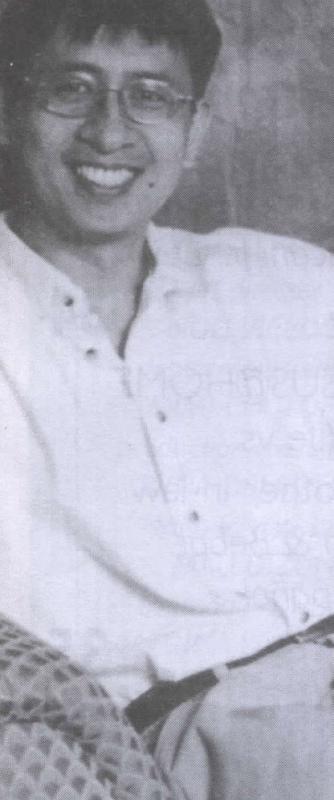 One day, I discovered I only had P9,000.00 left in my savings – tucked safely in my desk drawer. Actually, I still had some P700.00 in my wallet – but even with that, I was still probably the poorest “Chairman of the Board” this universe has ever known.
One day, I discovered I only had P9,000.00 left in my savings – tucked safely in my desk drawer. Actually, I still had some P700.00 in my wallet – but even with that, I was still probably the poorest “Chairman of the Board” this universe has ever known.
At about nine that morning, a member of our Catholic group called up and told me that her daughter was in the hospital. She needed P9,000.00 pronto!
“Lord, how could you?” I whispered under my breath. “Why do You always have to be so exact? Why do You always ask for all that I have?”
“Pick up your money here,” I told her as cheerfully as I could, hiding my anxiety. At the back of my mind, I was already imagining the dire and morbid consequences of my decision. Living with only P700.00 in my wallet meant not eating pizza for a few years (Oh, no!), jogging to my prayer meetings and wearing the same old clothes I have until I reached 75.
A few minutes later, another friend barged through our front door, weeping and telling me about her family problems. It ended with her very nervous plea, “Bo, can you give me P500.00?”
I started to laugh, “Not P700.00?”
She shook her head, baffled at my question. I pulled out my wallet and gave her P500.00. When you have a very thin wallet, that simple act is very, very difficult to do. But as I did that, a small bundle of crumpled, folded-up paper popped out of my wallet. I picked it up and couldn’t believe my eyes. It was another P500.00!
Where in the world did that come from? Suddenly, I felt God was telling me it was “miracle” time.
In my excitement, I wanted to get my P9,000.00 ready to be given away. (Who knows what would pop out as I did that?) I went to my room and grabbed the wad of paper bills from my drawer and shoved it into an envelope. But before sealing the cover, I thought of recounting the cash.
I leafed through the bills counting rather monotonously, “One thousand…two thousand…” It was only when I mentioned “…eleven thousand…”that I stopped, realizing that something was terribly wrong.
Finally, when I reached fifteen thousand pesos, I knelt down, cried a little and said a heartfelt prayer of thanks. “Lord, You’re something else. You still want me to eat pizza after all.”
“My son,” I felt the Lord speak to my heart, “today I insisted that you give me all that you have. And you did – I honor you for this. But there will still be many times when I’ll ask you the same thing – all of your time, all of your future, all of your desires. It is scary. But you’ll have to trust Me. As you give your all, you will be empty. But in your emptiness, you will have more room for Me.”
SALAMAT SA KERYGMA
The World Out There
By Sr. Wilfredis Jacob, ssps
All religious orders now have some sort of an immersion program, a way of getting their postulants or applicants to see if they can survive as religious in the real world out there. Sr. Wilfredis took some photos to the immersion program in which she took part.
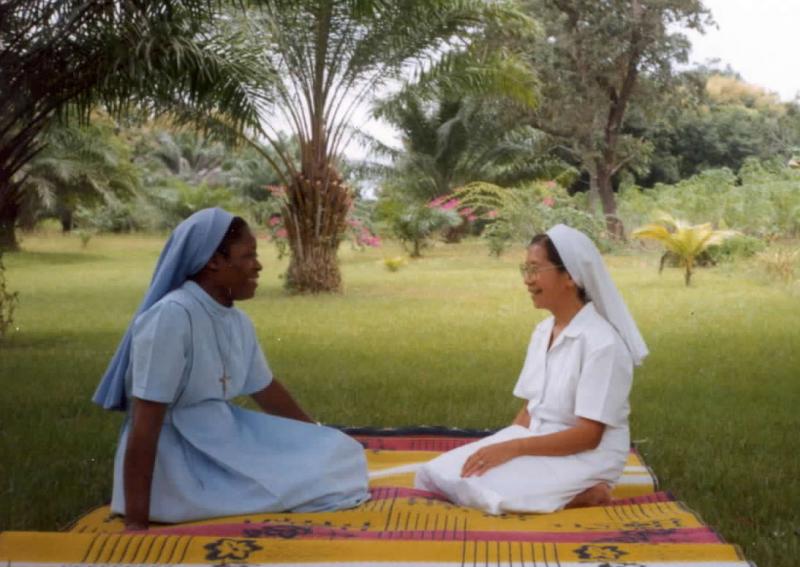
Sr. Elizabeth Ankrah, a young Ghanian SSpS preparing for her perpetual vows, with Sr. Wlifredis during an informal sharing session.
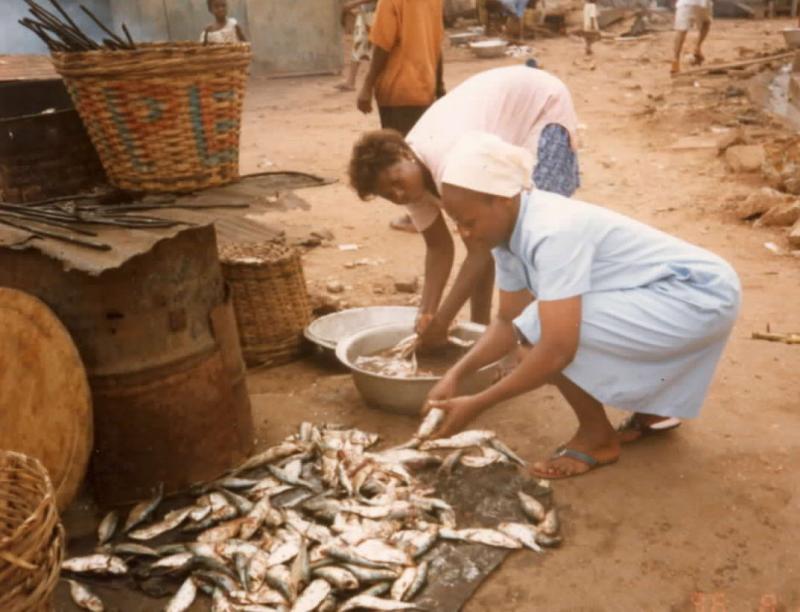
The exposure programme aims to let the applicants experience the reality of life with the poor.
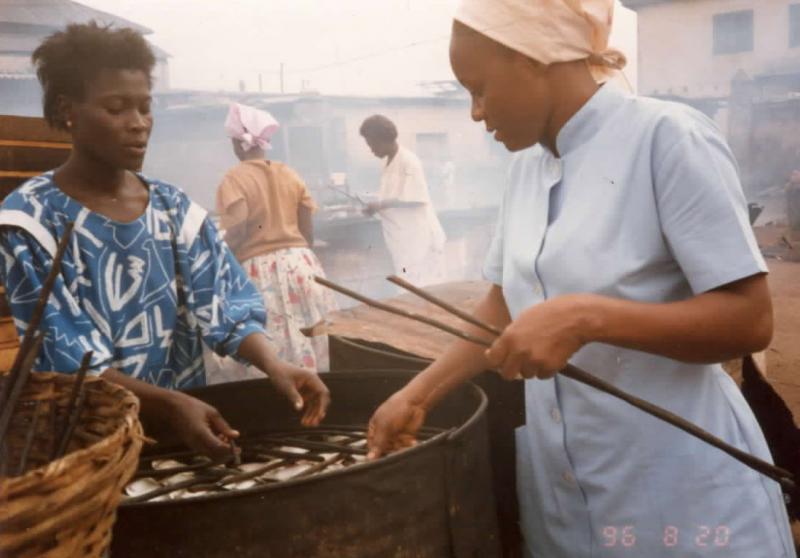
Sr. Mercy Benson prior to her perpetual profession, with a woman fish vendor, in one of the poor areas in Accra, capital of Ghana.
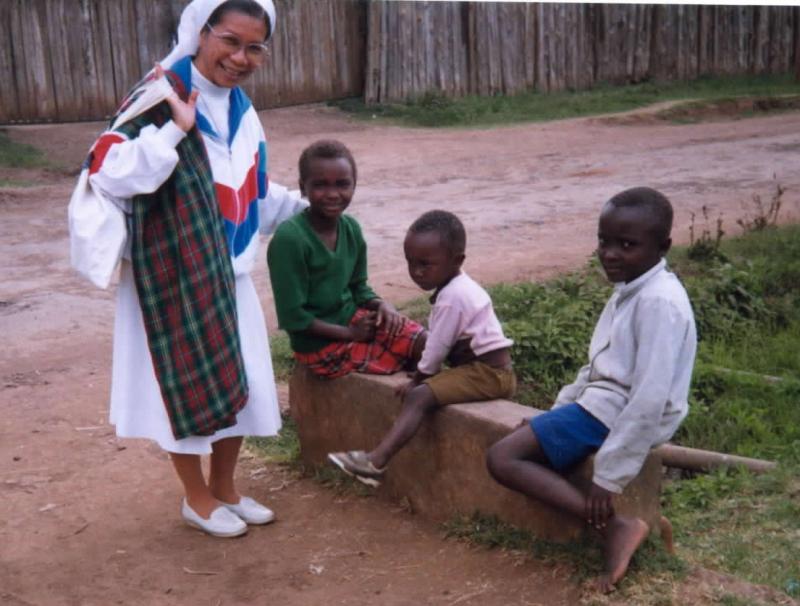
Sr Wilfredis with the children taken during a free afternoon from their in live-in seminar held at Nairobi, Kenya.
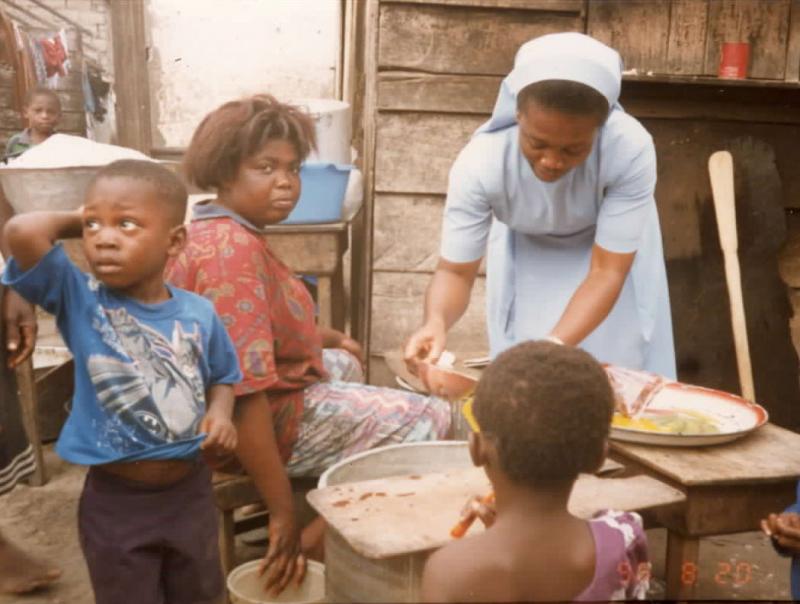
A young Ghanian SSpS during her apostolic exposure
When The Sea Is Calm…
By Ma. Catalina O. Torres
Love is not as simple as giving roses and chocolates on Valentine’s Day. Nor is it as easy as cutting red cartolinas into hearts. It entails a lot of sacrifices, too. Here is a simple story of a woman who braved through the storms because of her love for her family.

I met my husband, Raul, in his uncle’s house in Quezon City, where I was boarding with a friend and co-teacher in Maryknoll Grade School. He came to visit his father who was recuperating from a heart ailment. His stay was so short that we didn’t even get introduced to one another.
I attended the wedding of my friend in Bacolod. Raul’s parents invited me to stay in their house. I met the family except him since he was living in their farm. They were accommodating and kind. I saw him again when I joined his family to attend his Cursillo graduation. That was in 1965. There he announced his desire to become a Jesuit priest. Later, his younger sister wrote me that he did not make it in the interview.
Getting acquainted
It took sometime before we became friends. A student of mine, his niece, started to bring messages and tokens from him every time he visited Manila. His younger brother, studying in Manila, would bring me piaya, a delicacy from Negros made from flour and mascubado sugar, from Raul. I wrote to thank him and soon our correspondence became regular.
Getting acquainted was not easy. I was busy teaching in Maryknoll and he was occupied looking after their farm in Negros. He visited me in Manila every time he found time to get away from his work. He introduced me to his spiritual director since high school days Fr. John J. King, SJ. Fr. King, friends and relatives assured me of his sincerity and goodness. I was told of his good traits and character.
Sacrament of Matrimony
We got engaged and we set the date of our commitment to one another. We attended a pre-Cana seminar. I was very lucky the Maryknoll Sisters I worked with organized a group composed of a religious, a housewife, an educator, a psychologist and an economist to counsel and prepare me to the adjustments I needed to make. It really helped. Each one of the counselors gave me a parting message to live by. They became my rudder steering my marital life up to now.
On April 26, 1967, we got married and received the Sacrament of Matrimony. Fr. King officiated our wedding. We took our vows repeating after him “…in sickness and in health, for richer or poorer, until death do us part.” Our parents, relatives and friends witnessed the love we exchanged with each other.
Living in Negros
I left my roots behind and lived in Negros. We settled in the farm-house prepared for us by my in-laws. We started our family life simply. There was no electricity, so different from city life. I learned to speak Ilonggo fast. I mingled with the farm laborers and their families. In a year’s time I became a mother.
Intrigues
I won the affection and love of his family and relatives. There was good rapport among us. But it is said that when the sea is calm a storm is about to come. It did come. The nemesis dreaded by any in-laws came unexpectedly. I got letters and was accused of things I never did, neither did say – intrigues that could break a camel’s back. I was a stranger and had no family to turn to. Insecurity was slowly creeping into my system. I could imagine the cold reception, quizzical stares and soft whispers of the people around me. Only my faith and trust in the Lord kept me strong. Christ hanging on the cross consoled me all the time. He allowed Himself to be crucified because of his love for mankind. Who was I to complain?
Fortify yourself
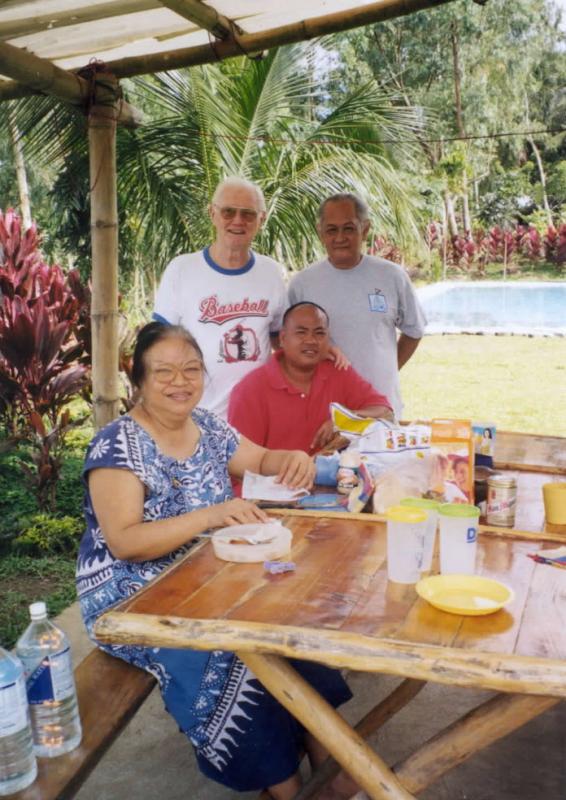
Raul, our son Jojo and me with Fr King when he visited us last year
Relatives and friends who learned of my situation gave their moral support. For spiritual guidance I confided to priests and nuns and even the Bishop of Bacolod, Msgr. Antonio Y. Fortich, who was a very close friend of my father-in-law. I considered him my spiritual father. In two words he made me into a valiant and courageous woman to continue living. “Fortify yourself” was his wise advice.
To ease the terrible anguish I was feeling I chose to keep a distance from the people who caused me pain. I needed space to breathe. I dedicated my time in caring for my children and got involved in community activities. My husband stood-by me.
A Great Loss
The sudden death of my father-in-law was a great loss. He was a well-loved person, righteous and just. He gave everybody a chance and importance. His passing away made my husband insecure. He was not given any responsibility to help his family. His talents and abilities were curtailed. He turned to alcohol and smoking to overcome his frustration. He neglected the farm he was leasing. Friends and relatives consoled him. Fr. King, SJ and other priests even stayed in our house for spiritual healing.
Another nightmare
Years passed when another nightmare came – the death of the sugar industry in the Philippines added to my husband’s miseries. He was not prepared. He could not adjust and accept the fact that banks froze loans. Six growing children needed all the care we can give them.
I remembered the message of one of my counselors during the pre-Cana – you must be prepared to be the breadwinner. Prayers, prayers, prayers. I dreamed of my mother telling me to sell cooked food so my family won’t starve. I dreamed of San Lorenzo Ruiz giving the same message and to rally behind my husband. Miracle of all miracles, my brother-in-law and his wife sold their property fronting a Maritime school. I could only afford 50 % down payment and the balance payable in one year. I needed only a small capital to start a food business.
The Family Cookery
The Family Cookery was blessed on Dec. 26, 1979. From then on it became our bread and butter. My husband though new to food business helped me in the venture to survive. He started to learn the trade of selling and the children enjoyed helping. Aside from the food store I did catering services and repacked fried corns and watermelon seeds supplied by my friend in Bulacan. Yes, there was always food on the table. My family did not starve.
The Family Cookery is the silent witness to the education of our children. They all graduated and got their degrees from the best schools in the country. What I’ve gone through can be measured of what my family is now. We are not an ideal A-one family. Individual differences arise but because of love and faith in the Lord we overcome them. Looking back I can say with confidence in my heart…
Lord, thank you for all the blessings. Thank you for my husband and six children. Thank you for making me follow You with all the crosses and trials you’ve given me. The hurt, anguish and unhappiness I experienced made me stronger and closer to You.
Who Is The Running Priest?
By Gee-Gee O. Torres, assistant editor

Before I left for Manila to attend the National Congress of the Laity last year, I received an email from our editor, Fr Niall O’Brien, who was on vacation in Ireland. He said we would feature Fr Robert Reyes in Misyon. Fr Niall sent me some materials for the article but we needed a personal story to go with it. Since I was on my way to Manila, I decided to visit and interview Fr Robert in his parish in UP Diliman, Quezon City.
The Interview
This was my first time to interview a prominent figure. I was nervous. I had to ask a friend to accompany me. I waited outside his office and after a few minutes of bearing the agony of anticipation, a man came out and invited me in. It was no other than Fr Reyes himself. He was very accommodating. During the interview I was just like having a casual conversation with a friend. Thirty minutes was all I got for he had another appointment at 5:00 pm so I had to get down to work right away.
Fr Robert Reyes, popularly known as The Running Priest, is from Malabon, the eldest in a family of four, studied AB Philosophy in Ateneo de Manila University, joined the San Jose Seminary and ordained into priesthood in 1982. Presently he is the parish priest of the Holy Sacrifice Church in UP Diliman.
Becoming almost an Athlete
Running wasn’t really Fr Robert’s sports since childhood. However when he contracted tuberculosis a year before the joined the seminary, his doctor told him that if he really wanted to recover and stay away from TB he must become almost an athlete. He had to develop his cardiovascular abilities. “I had to learn to bike, to run and to swim regularly. In the seminary there was a swimming pool, lots of open space for running and there was a bicycle. So talagang doon, sineryoso ko na. From 1970 up to the present, I run, I swim, I bike,” said Fr Reyes.
The Running Priest?
I asked him, “Why The Running Priest?” He said the title was born in 1996 when he started running publicly. The media named him “The Running Priest” because he runs to bring attention to issues he is passionate about such as protecting the environment, speaking out against graft and corruption in the government, abolition of the Death Penalty and cancellation of the Debts of the poor countries such as the Philippines. Fr Robert says the title has become more and more used that “people will recognize me on the streets, but they don’t know my name. I don’t know if I am really happy about that. It makes me feel like I have become a commodity, but on the brighter side a symbol of a movement both within the Church and society.”
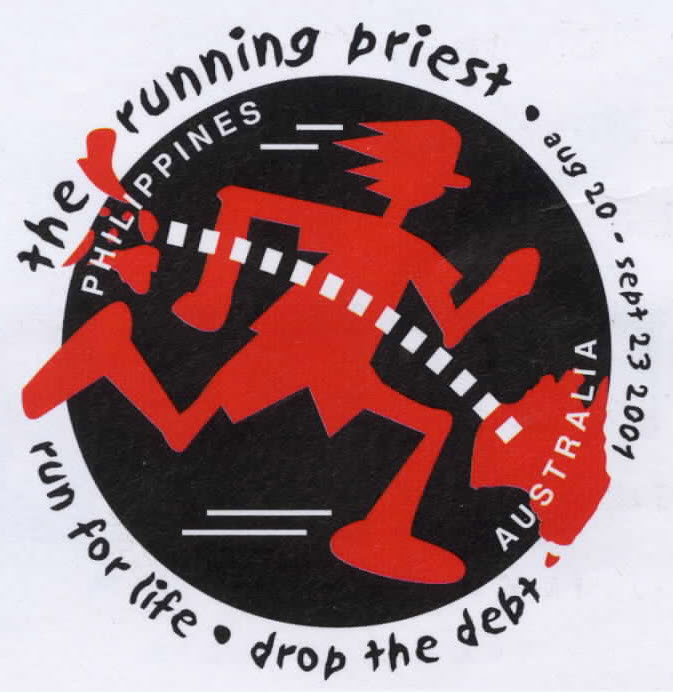
Crazy Idea
In 1996 Fr Robert hit the headlines: Priest to run cross-country, Takbo para sa Kapayapaan, Kalikasan at Kalayaan. For the next three years he covered Luzon, Visayas, and Mindanao. The thought of running the entire archipelago dawned on him in 1995. “It came as an isolated inspiration. I was just running one day and the Centennial celebration of our independence came to mind. I thought of doing something that would have a national impact, that would contribute to a deeper consciousness of being Church and of our being Filipino. National impact? Takbuhin ko ang buong Pilipinas. ‘What a crazy idea.’ I laughed at myself. I was 40 years old at that time. I was not old neither was I young. At forty, I decided to run the whole Philippines?!”
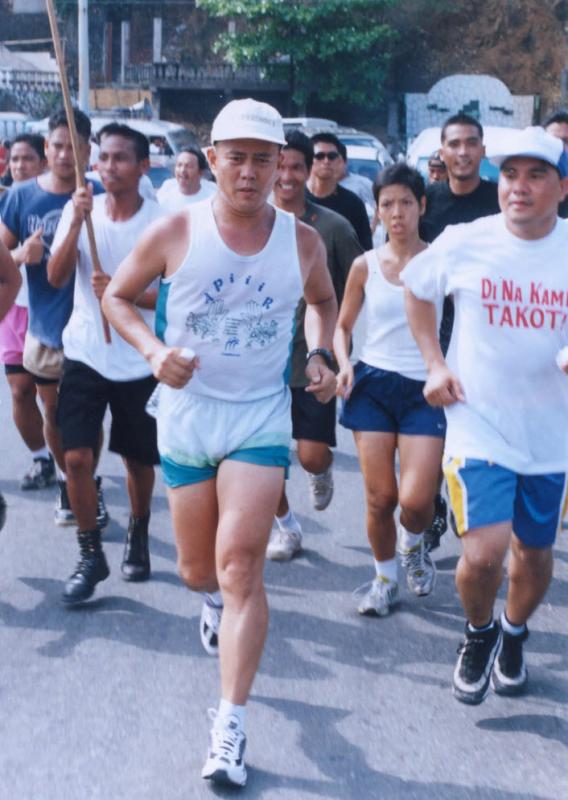
Cesar Guarin
This crazy idea of Fr Robert didn’t just end there. When he shared it with a friend, he found out that it could be done. His friend knew Cesar Guarin, a Filipino who had tried to become the first global runner. Fr Robert met Cesar and Cesar said that if he war really interested, he would train him. “But, Father, you should realize that I started running at the age of 23. And you are now 40. You are trainable but are you ready to submit to the discipline? You need at least six months of intensive training.”
Rigorous Training
True enough, it was not easy. “Cesar would make me run. I had to become an ultra runner. The tortures and rigors of training to become an ultra runner was tough. An ultra runner means somebody who could run 50-100 kilometers non-stop, 24 hours without sleep. The whole time when I was training I was assistant priest in Cubao and by the time I was about to start my run, I was transferred to UP Diliman as parish priest. Training and adjusting to my new assignment at the same time made things even more complicated.
That’s the kind of physical, psychological, mental and spiritual training I needed to meet. During the training I was already getting discouraged and scared. But then Cesar told me, ‘Father, if you really want to run the whole length of the archipelago, you cannot run 10 kms a day you’ll never finish. So you have to run 40-50 kms everyday so that in one week’s time you could, for example, cover Manilato Bicol.’ I wasn’t able to complete the training because it was time to take off with the first leg of my run: Takbo para sa Kapayapaan (Mindanao). I had to train on the run. I had to run 50 kms a day when I never had an experience of running 50 kms consecutively.’
It’s Faith
When I asked Fr Reyes what gave him the courage to continue with his plan of running the whole Philippines despite the inadequate training, he said, “Faith. It was humanly impossible for me to keep running everyday for 50 kilometers with very little sleep and rest in between. However I was not just relying on my physical energy but also on another source of energy – the ‘energy’ of my faith. The spirituality of running sustained me throughout the run. It’s the spirituality that made me focus on the goal of reaching the finish line and not allow myself to be distracted by things that are extraneous and incidental like fatigue, abrasions, callouses.”
Waste of Energy
There are people who think that what Fr Robert is doing is useless. They say the situation in the country is getting worse and nothing we do will change a thing. So why waste energy in running? Why waste precious resources when nothing is changing? “The secret in change is not making big steps but constantly making little steps towards the big change. Running is a very appropriate analogy of change. For example, when you start running from Sorsogon, your first step is till far away from Manila, but your second step is closer to Manila than your first step and your10,000th step is already bringing you to Manila. If changing the Philippine society was a marathon, it’s not an ordinary marathon. It’s an ultra marathon which involves thousands of kilometers of running non-stop. You won’t see the change overnight but when you reach the end of the line you will see the change,” says Fr Robert.
At the height of the Abu Sayyaf crisis in the country Fr Robert’s name was included among the list of names of targets which the Abu Sayyaf released. I asked him what precautionary measures was he taking. “I am being careful. Definitely I don’t want to be wasted away. These threats are natural consequences of what I am and what I do. But these things cannot be a reason for me to keep quiet and stop running. What will stop me from running? Sickness, disability, death.”
Running has given Fr Robert the endurance he needs to believe in an ideal and to keep fighting for it even if there are very few left to fight for it. He said, “All it takes is to believe that one can be an ultra runner, can train for it and at the end become what you dared to be.”
-------------------------------------------------------------------------------------------------------------------------------------------
“Be faithful to your missionary vocation abroad because your faithfulness will strengthen us who are missionaries at home.” – Fr Robert Reyes
----------------------------------------------------------------------------------------------------------------------------------------
FR ROBERT RUNS IN AUSTRALIA
The Columban Mission Institute and Caritas Australia invited Fr Robert last year to run in their “Run for Life -- Drop the Debt!” campaign. The campaign was to help raise awareness in Australia about the misery and death which the Third World Debt causes to people in many poor countries who are burdened by debt. Seven million children under the age of five will have to die each year from preventable diseases just to pay the interest on their Debts.
The Philippines owes more than Aus$90 billion and spend up to 40 % of its income servicing our debt. This means that every year many Filipinos will die and millions will be reduced to grinding poverty because there is little money for medicines and food. For every $1 received in aid, thePhilippines spends $14 in debt service.
Fr. Robert shared that his run in ten major cities in Australia over a period of 35 days helped him to understand running in a different perspective. “It was good to see how two countries and two peoples, Australian an Filipino, can work together towards something that will benefit both.”